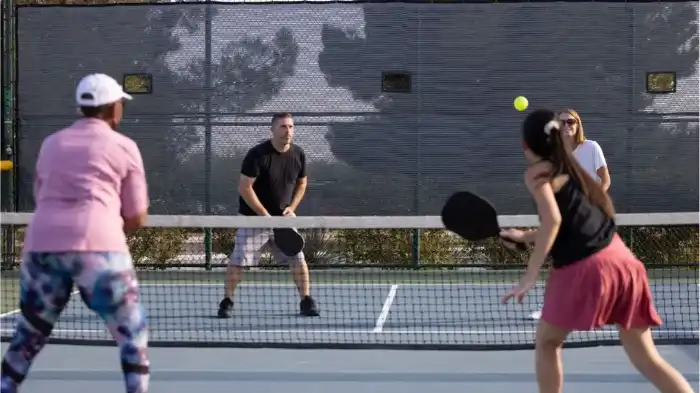The sport of pickleball has been gaining popularity in recent years, thanks to its easy-to-learn rules and fast-paced gameplay. One aspect that can sometimes confuse new players is the scoring system. In this blog post, we will break down the basics of easy pickleball scoring and provide you with some tips to make it even easier. So, let’s dive into the world of easy pickleball scoring!
Understanding the Basics
Before we delve into the different ways to score in pickleball, it’s important to understand the basic structure of the game. Pickleball is typically played as a doubles sport, with teams of two players each. The game is played on a rectangular court, similar to that of a badminton court, with a net in the middle. The objective is to hit the ball over the net and into the opponent’s court without them being able to return it.

Scoring in Pickleball
Pickleball follows a simple scoring system that is based on the concept of rally scoring. This means that points can be scored by either the serving or the receiving team. The first team to reach 11 points (or 15 in some cases) and have a margin of at least two points wins the game.
- When your team is serving, you can score points in the following situations:
- When the opposing team fails to return the serve over the net
- When the opposing team hits the ball out of bounds
- When the opposing team commits a fault, such as stepping into the non-volley zone
On the other hand, if your team is receiving, you can only score points if the serving team commits a fault. This could include serving out of bounds or into the net.
Additional Scoring Rules
In addition to the basic scoring system, pickleball also has a few additional rules that are important to understand. Here are some of the key rules:
Side Out Rule
If the serving team fails to score a point or commits a fault, it results in a side out, which means that the serve is given to the opposing team. The receiving team then has the opportunity to score points while serving.
Non-Volley Zone
The non-volley zone, also known as the kitchen, is a seven-foot area on each side of the net. Players are not allowed to enter this zone and hit the ball without letting it bounce first. If a player violates this rule, it results in a fault and the opposing team scores a point.
Margin of Victory
In order to win a game, a team must not only reach the required number of points but also have a margin of at least two points over the opposing team. For example, if the score is 10-10, the game will continue until one team has a two-point advantage.
Tips for Easy Pickleball Scoring
Now that you have a good understanding of the scoring system in pickleball, here are a few tips to make Easy Pickleball scoring even easier:
Communicate with Your Partner
It’s crucial to communicate with your partner during the game to ensure you are both on the same page regarding the score. This will help avoid any confusion or disagreements when it comes to keeping track of points.
Focus on Consistency
Consistency is key in pickleball. By focusing on making consistent shots and avoiding faults, you can increase your chances of scoring points. Make sure to practice your shots and develop a solid strategy with your partner.

Pay Attention to the Non-Volley Zone
The non-volley zone can be a challenging area to navigate, as stepping into it results in a fault. Pay close attention to your positioning and avoid hitting the ball while inside the kitchen. This will help you avoid giving away easy points to your opponents.
Conclusion
Scoring in pickleball doesn’t have to be complicated. By understanding the basic structure of the game and following the easy pickleball scoring rules, you can easily keep track of points and enjoy the game to its fullest. Remember to communicate with your partner, focus on consistency, and be mindful of the non-volley zone. Now you’re ready to hit the court and start scoring those points in your next pickleball match!
Frequently Asked Questions
In pickleball, scoring follows a simple system. You only score points when your team is serving, and each side can only score points if they win a rally. The first team to reach 11 points, with a margin of at least 2 points, wins the game.
When the score reaches 10-10, it’s called a “tiebreaker.” In this situation, both teams will continue to serve, but they will only score points when they are serving. The first team to gain a 2-point lead wins the game.
Yes, in pickleball, the serving team has to alternate sides after each point is scored. The player on the right side always begins serving, and their team will continue serving until they lose a rally. Once a rally is lost, the serve is then passed to the opposing side.
Yes, during a game, players are allowed to switch sides after each odd-numbered point. This allows for both teams to experience the advantages and disadvantages of both sides of the court, promoting fairness and balance in the game.
During a match, the winner is determined by the best of three games. So, whichever team wins two out of the three games is ultimately declared the match winner. Remember, each game is played until one team reaches 11 points with a 2-point lead.

